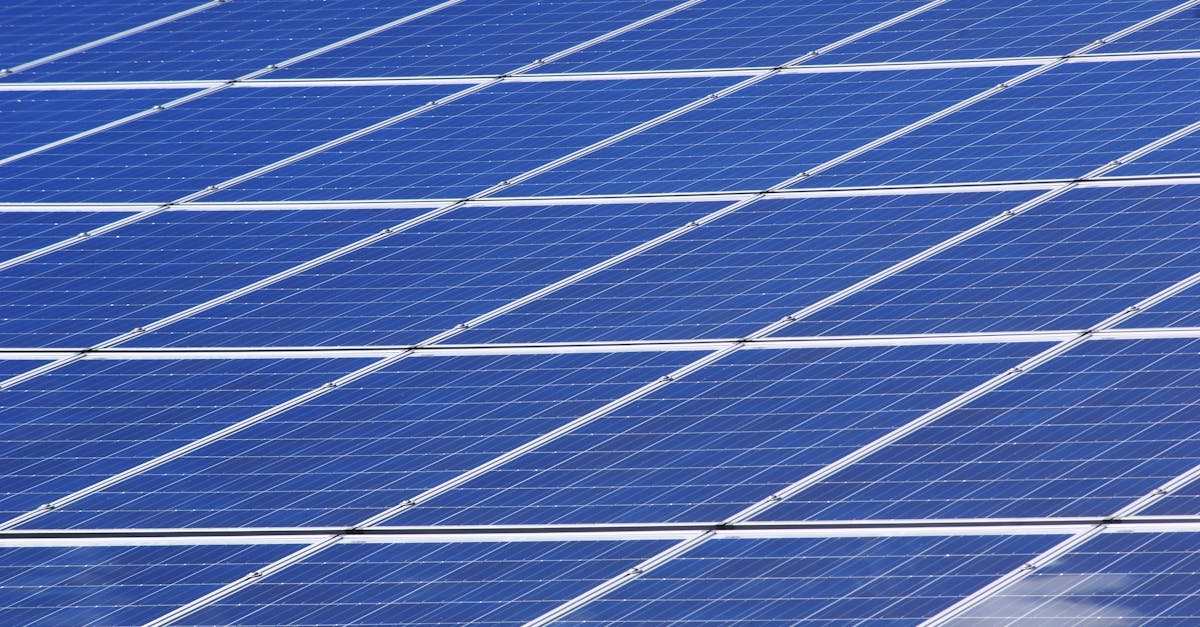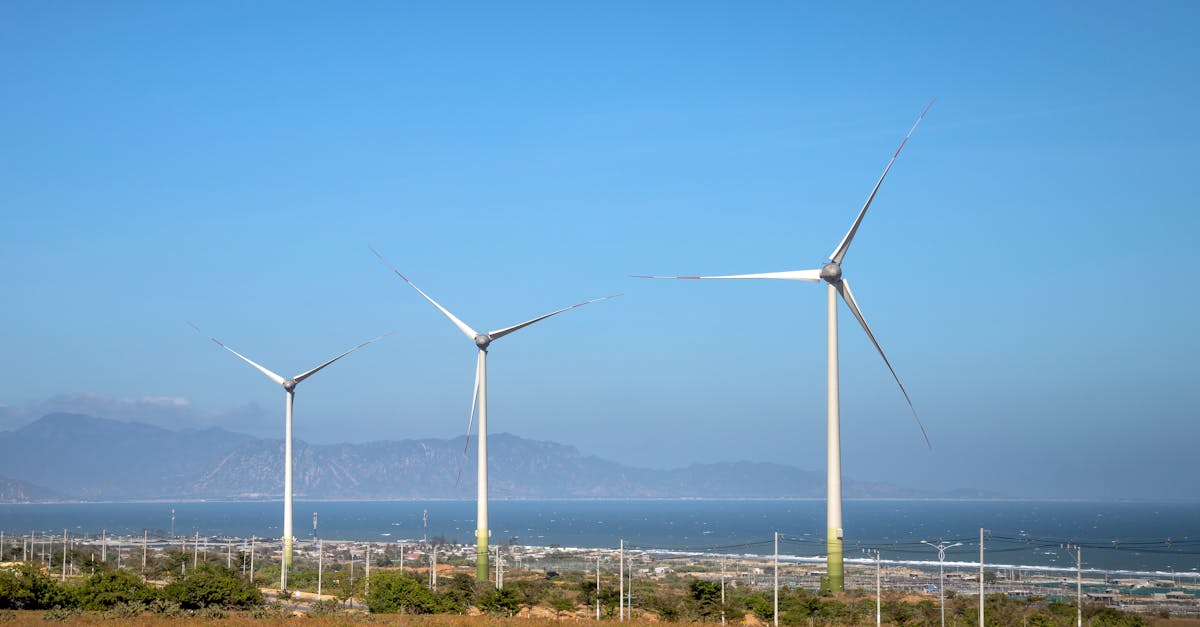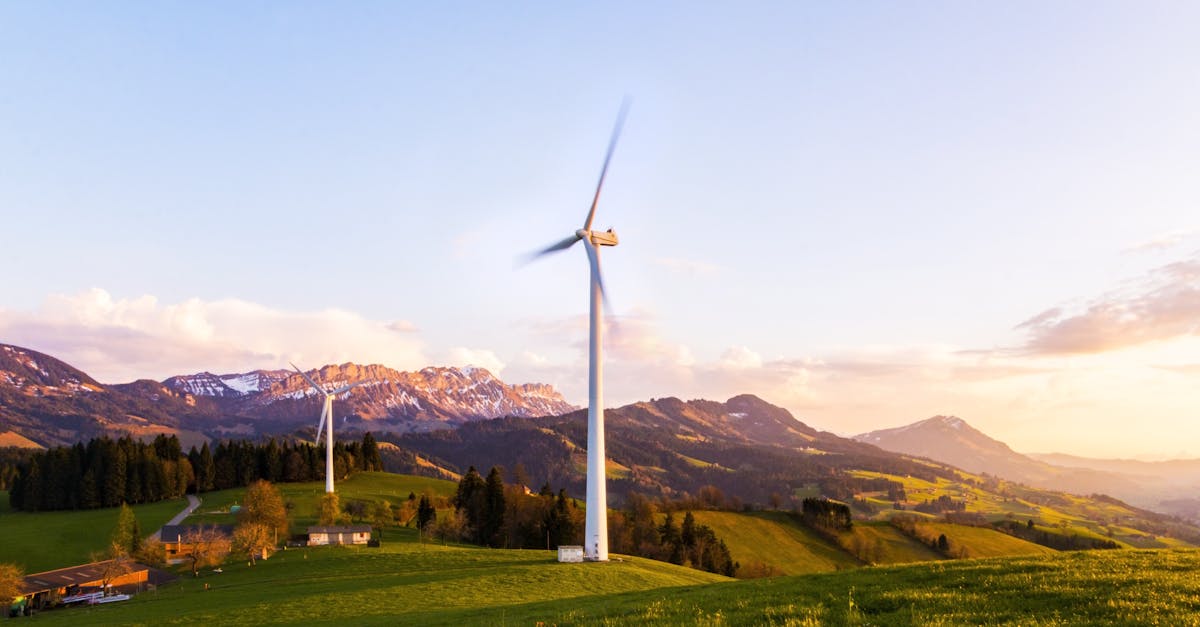Fueling a Sustainable Future: Exploring the Promise of Renewable and Sustainable Energy

In an era marked by climate change and energy demands, the transition towards renewable and sustainable energy sources has become crucial. Shifting away from conventional, fossil-based energy systems offers an array of benefits, including environmental protection, enhanced energy security, and economic growth. Renewable energy sources like solar, wind, hydro, and geothermal power provide clean and sustainable alternatives, while sustainable energy practices promote energy efficiency and conservation.
This transition, however, comes with its own set of challenges, including the intermittent and variable nature of renewable energy sources, the need for cost-effective and scalable solutions, and potential environmental impacts. Overcoming these barriers requires a collaborative effort involving technological advancements, policy support, and effective resource management.
Thank you for reading this post, don't forget to subscribe!
As we delve into the world of renewable and sustainable energy, we will explore the science behind these technologies, examine their environmental and economic benefits, and discuss the challenges and opportunities that lie ahead. By gaining a deeper understanding of these concepts, we can contribute to a sustainable future, where clean, affordable, and reliable energy powers our lives.
1. The Importance of Renewable and Sustainable Energy
The transition to renewable and sustainable energy sources is of paramount importance for the well-being of our planet and future generations. Embracing renewable energy technologies, such as solar, wind, and hydropower, offers a multitude of benefits encompassing environmental protection, enhanced energy security, and economic growth.
Firstly, renewable energy sources contribute significantly to mitigating climate change and preserving the environment. Unlike fossil fuels, which release greenhouse gases into the atmosphere, renewable energy sources generate electricity without emitting harmful pollutants. By reducing our reliance on fossil fuels, we can combat climate change, improve air quality, and protect ecosystems.
Moreover, renewable energy enhances energy security by diversifying energy sources and reducing dependence on imported fuels. Countries that invest in renewable energy technologies can become more self-sufficient, reduce geopolitical tensions over energy resources, and mitigate the risks associated with fuel price volatility. Additionally, renewable energy creates new employment opportunities, stimulates innovation, and fosters sustainable economic growth.
Environmental Benefits
Renewable energy sources offer a multitude of environmental benefits, including reducing greenhouse gas emissions, improving air quality, and promoting biodiversity.
Firstly, renewable energy sources play a crucial role in mitigating climate change by reducing greenhouse gas emissions. Unlike fossil fuels, which release significant amounts of carbon dioxide and other greenhouse gases into the atmosphere, renewable energy sources generate electricity without emitting greenhouse gases. By transitioning to renewable energy, we can curb global emissions and combat climate change, mitigating its adverse effects on the environment and human well-being.
Furthermore, renewable energy sources contribute to improving air quality by reducing air pollution. Fossil fuel combustion releases various pollutants, such as particulate matter, sulfur dioxide, and nitrogen oxides, into the air, which can cause respiratory problems, cardiovascular diseases, and other health issues. Renewable energy sources, on the other hand, do not emit these pollutants, leading to cleaner air and improved public health.
Additionally, renewable energy development can promote biodiversity by preserving and restoring natural habitats. Unlike fossil fuel extraction, which often disrupts ecosystems and displaces wildlife, renewable energy projects can be integrated into existing landscapes with minimal environmental impact. For example, solar farms can provide habitat for pollinators, and wind turbines can create nesting sites for birds.
Economic Advantages
The development of renewable energy sources offers significant economic advantages, including job creation, reduced energy costs, and increased energy independence.
Firstly, renewable energy projects create new employment opportunities in various sectors, including manufacturing, installation, and maintenance. As countries invest in renewable energy technologies, they stimulate economic growth and create sustainable jobs. For example, the solar industry has been a major job creator in recent years, with millions of people employed in the manufacturing, installation, and maintenance of solar panels and systems.
Secondly, renewable energy can reduce energy costs for consumers and businesses. Over the long term, renewable energy sources are often cheaper than fossil fuels, as they do not require the purchase of fuel. Additionally, renewable energy can help stabilize energy prices, as it is not subject to the same price fluctuations as fossil fuels. By investing in renewable energy, countries can reduce their dependence on imported energy sources and lower energy costs for their citizens and businesses.
Furthermore, renewable energy development enhances energy independence by reducing reliance on foreign energy imports. Countries that invest in renewable energy technologies can become more self-sufficient and less vulnerable to disruptions in the global energy market. This can improve national security and reduce the risk of energy shortages.
2. Types of Renewable Energy Sources

There are several main types of renewable energy sources, each with its advantages and disadvantages.
-
Solar energy is generated from the sun’s rays. Solar panels convert sunlight into electricity, which can be used to power homes, businesses, and communities. Solar energy is a clean and renewable source of energy, and it is becoming increasingly affordable.
-
Wind energy is generated from the wind. Wind turbines convert the kinetic energy of the wind into electricity. Wind energy is another clean and renewable source of energy, and it is also becoming increasingly affordable.
-
Hydropower is generated from the movement of water. Hydroelectric dams use the force of water to generate electricity. Hydropower is a clean and renewable source of energy, but it can have negative environmental impacts, such as disrupting fish migration and flooding ecosystems.
-
Biomass energy is generated from organic materials, such as wood, plants, and animal waste. Biomass can be burned to generate heat or electricity, or it can be converted into biofuels. Biomass energy is a renewable source of energy, but it can also contribute to air pollution.
-
Geothermal energy is generated from the heat of the Earth’s core. Geothermal power plants use the heat of the Earth to generate electricity. Geothermal energy is a clean and renewable source of energy, but it is only available in certain areas.
Solar Energy
Solar energy is a clean and renewable source of energy that has the potential to meet a significant portion of the world’s energy needs. Solar energy conversion is the process of converting sunlight into electricity. This can be done using photovoltaic (PV) systems or concentrated solar power (CSP) systems.
PV systems use solar cells to convert sunlight directly into electricity. Solar cells are made of semiconductor materials, such as silicon, that absorb sunlight and create an electrical current. PV systems can be used to power a wide range of applications, from small electronics to large-scale power plants.
CSP systems use mirrors to concentrate sunlight onto a receiver, which is then used to heat a fluid. The heated fluid is then used to generate electricity. CSP systems are more efficient than PV systems, but they are also more expensive.
Solar power has a wide range of applications, including:
- Electricity generation: Solar power can be used to generate electricity for homes, businesses, and communities. Solar power plants can be large-scale or small-scale, and they can be located in a variety of places, including deserts, rooftops, and fields.
- Water heating: Solar power can be used to heat water for homes and businesses. Solar water heaters are a cost-effective way to reduce energy costs and emissions.
- Space heating and cooling: Solar power can be used to heat and cool homes and businesses. Solar thermal systems use sunlight to heat water or air, which is then used to heat or cool a building.
Solar energy is a promising source of clean and renewable energy. As the cost of solar technology continues to decline, solar power is becoming increasingly competitive with other forms of energy.
Wind Energy
Wind energy is a clean and renewable source of energy that has the potential to meet a significant portion of the world’s energy needs. Wind energy conversion is the process of converting the kinetic energy of the wind into electricity. This is done using wind turbines.
Wind turbines are large structures that have blades that rotate when the wind blows. The blades are connected to a generator, which converts the rotational energy of the blades into electricity. Wind turbines can be used to generate electricity for homes, businesses, and communities.
The amount of electricity that a wind turbine can generate depends on a number of factors, including:
- Wind speed: The faster the wind speed, the more electricity a wind turbine can generate.
- Turbine size: Larger turbines can generate more electricity than smaller turbines.
- Turbine efficiency: The efficiency of a wind turbine is determined by how well it converts the kinetic energy of the wind into electricity.
- Site location: The location of a wind turbine can also affect how much electricity it can generate. Turbines that are located in areas with high wind speeds will generate more electricity than turbines that are located in areas with low wind speeds.
Wind energy is a promising source of clean and renewable energy. As the cost of wind technology continues to decline, wind power is becoming increasingly competitive with other forms of energy.
In addition to the factors mentioned above, the following factors can also affect wind power generation:
- Air density: The density of the air can affect the amount of electricity that a wind turbine can generate. Air is less dense at higher altitudes, so wind turbines that are located at higher altitudes will generate less electricity than turbines that are located at lower altitudes.
- Turbulence: Turbulence can also affect the amount of electricity that a wind turbine can generate. Turbulence can cause the blades of a wind turbine to vibrate, which can reduce the efficiency of the turbine.
Hydropower
Hydropower is a clean and renewable source of energy that has been used for centuries. Hydropower generation is the process of converting the kinetic energy of flowing water into electricity. This is done using hydroelectric power plants.
Hydroelectric power plants use a variety of technologies to generate electricity, including dams, turbines, and generators. Dams are used to create a reservoir of water behind the dam. The water in the reservoir is then released through a turbine, which spins a generator to produce electricity.
There are two main types of hydroelectric power plants:
- Impoundment hydropower plants: These plants use a dam to create a large reservoir of water. The water in the reservoir is then released through a turbine to generate electricity.
- Run-of-the-river hydropower plants: These plants use the natural flow of a river to generate electricity. A small dam or weir is used to divert some of the river’s water through a turbine.
Hydropower is a reliable and affordable source of energy. However, there are also some environmental considerations associated with hydropower, including:
- Habitat loss: The construction of dams can lead to the loss of fish and wildlife habitat.
- Water quality: The operation of dams can affect water quality downstream of the dam.
- Greenhouse gas emissions: The construction of dams can lead to the release of greenhouse gases, such as methane.
Overall, hydropower is a valuable source of clean and renewable energy. However, it is important to consider the environmental impacts of hydropower before building new dams.
Biomass Energy
Biomass energy is a renewable source of energy that is derived from organic materials, such as wood, plants, and animal waste. Biomass can be converted into energy through a variety of processes, including combustion, gasification, and pyrolysis.
Combustion is the most common way to convert biomass into energy. Biomass is burned in a boiler to produce heat, which can then be used to generate electricity or heat homes and businesses. Gasification is a process that converts biomass into a combustible gas. The gas can then be used to generate electricity or heat homes and businesses. Pyrolysis is a process that converts biomass into a liquid fuel. The liquid fuel can then be used to power vehicles or generate electricity.
There are a variety of different types of biomass feedstocks that can be used to produce energy. Some of the most common feedstocks include:
- Wood: Wood is a versatile biomass feedstock that can be used to produce heat, electricity, and liquid fuels.
- Agricultural residues: Agricultural residues, such as corn stover and sugarcane bagasse, can be used to produce heat and electricity.
- Animal waste: Animal waste, such as manure, can be used to produce heat and electricity.
The sustainability of biomass utilization depends on a number of factors, including the type of feedstock, the conversion process, and the end use of the energy. Biomass is a renewable resource, but it is important to use it sustainably to avoid negative environmental impacts.
One of the main concerns about biomass utilization is the potential for deforestation. If trees are harvested for biomass faster than they can be replanted, it can lead to deforestation and habitat loss. It is important to use biomass from sustainably managed forests to avoid this problem.
Another concern about biomass utilization is the potential for air pollution. The combustion of biomass can release harmful air pollutants, such as particulate matter and nitrogen oxides. It is important to use clean combustion technologies to minimize air pollution from biomass utilization.
Geothermal Energy
Geothermal energy is a clean and renewable source of energy that is derived from the heat of the Earth’s interior. Geothermal energy can be used to generate electricity or heat homes and businesses.
The principles of geothermal energy extraction are relatively simple. Geothermal power plants use wells to extract hot water or steam from the Earth’s crust. The hot water or steam is then used to turn a turbine, which generates electricity.
There are two main types of geothermal power plants:
- Dry steam power plants: These plants use hot steam from the Earth’s crust to turn a turbine. Dry steam power plants are the most efficient type of geothermal power plant.
- Flash steam power plants: These plants use hot water from the Earth’s crust to turn a turbine. The hot water is flashed into steam as it enters the power plant. Flash steam power plants are less efficient than dry steam power plants, but they can be used in areas where there is not enough steam to operate a dry steam power plant.
Geothermal energy has a number of advantages over other renewable energy sources. Geothermal power plants can operate 24 hours a day, 7 days a week, regardless of the weather. Geothermal energy is also a reliable source of energy, as the heat of the Earth’s interior is constant.
The potential of geothermal energy is vast. Geothermal energy could provide up to 10% of the world’s electricity needs. However, geothermal energy is only available in certain areas of the world. The best locations for geothermal power plants are areas with high levels of geothermal activity, such as volcanic areas and areas near tectonic plate boundaries.
Geothermal energy is a clean, renewable, and reliable source of energy. Geothermal power plants can operate 24 hours a day, 7 days a week, regardless of the weather. Geothermal energy has the potential to provide up to 10% of the world’s electricity needs.
3. Sustainable Energy Practices
Sustainable energy practices encompass a range of measures aimed at reducing energy consumption, promoting energy efficiency, and utilizing renewable energy sources. These practices not only contribute to environmental sustainability but also bring economic benefits. By adopting sustainable energy practices, individuals and organizations can minimize their carbon footprint, reduce energy costs, and enhance energy security.
One key aspect of sustainable energy practices is energy efficiency. Energy efficiency refers to using less energy to perform the same task or achieve the same level of output. This can be achieved through various measures, such as improving insulation in buildings, using energy-efficient appliances, and adopting more efficient industrial processes. By enhancing energy efficiency, we can reduce the demand for energy, leading to lower energy consumption and decreased greenhouse gas emissions.
Another important practice is energy conservation. Energy conservation involves reducing unnecessary energy consumption and adopting behavioral changes that promote energy savings. Simple measures like turning off lights when leaving a room, unplugging electronic devices when not in use, and using public transportation instead of driving alone can significantly contribute to energy conservation. Public awareness campaigns and government regulations play a crucial role in promoting energy conservation practices.
Energy Efficiency
Energy efficiency encompasses the practices and technologies employed to reduce energy consumption while maintaining or enhancing the level of service or output. It involves implementing measures to minimize energy waste and optimize energy use in various sectors, including residential, commercial, industrial, and transportation. By adopting energy-efficient strategies, we can significantly reduce our energy demand, leading to environmental and economic benefits.
One effective strategy for improving energy efficiency is to enhance the insulation of buildings. Proper insulation in walls, roofs, and floors helps regulate indoor temperatures, reducing the need for excessive heating or cooling. Energy-efficient windows and doors can also minimize heat loss and improve overall building performance. Additionally, utilizing energy-saving lighting technologies, such as LED and CFL bulbs, can drastically reduce energy consumption while providing adequate illumination.
Furthermore, adopting energy-efficient appliances and equipment can significantly contribute to reducing household energy use. Look for appliances with Energy Star ratings, which indicate that they meet specific energy-saving standards. Simple behavioral changes, such as unplugging electronic devices when not in use, can also lead to noticeable energy savings.
Energy Conservation
Energy conservation plays a pivotal role in mitigating energy consumption and promoting sustainability. It involves adopting behavioral changes and implementing measures to reduce energy use without compromising essential services or comfort levels. Simple yet effective conservation practices can make a significant collective impact.
One crucial aspect of energy conservation is raising awareness and encouraging behavioral changes among individuals and organizations. Educating the public about the environmental and economic benefits of energy conservation can foster a sense of responsibility and motivate people to adopt sustainable practices. Simple actions like turning off lights when leaving a room, unplugging electronics when not in use, and using public transportation instead of driving alone can contribute to noticeable energy savings.
Furthermore, governments worldwide have implemented various policies and regulations to promote energy conservation. These policies often include setting energy efficiency standards for buildings, appliances, and vehicles. Governments may also offer incentives, such as tax breaks or rebates, to encourage the adoption of energy-efficient technologies. By establishing clear guidelines and providing financial support, governments can accelerate the transition towards a more energy-conscious society.
Energy Storage
Energy storage technologies play a crucial role in integrating renewable energy sources into our electrical grids. They allow us to store excess energy produced during times of high generation and release it when needed, ensuring a reliable and stable energy supply. Several energy storage technologies are available, each with its unique characteristics and applications.
One widely used energy storage technology is batteries. Batteries store chemical energy that can be converted to electricity. They are commonly used in portable electronic devices, electric vehicles, and grid-scale energy storage systems. Batteries offer relatively high energy density, allowing them to store a significant amount of energy in a compact space. However, they have a limited lifespan and can be expensive to manufacture.
Another energy storage technology is pumped hydro storage. This method involves pumping water to a higher reservoir during times of low energy demand and releasing it through a turbine to generate electricity when needed. Pumped hydro storage systems have a high energy density and long lifespan, making them suitable for large-scale energy storage. However, they require specific geographical conditions, such as the availability of two reservoirs at different elevations.
Flywheels are another energy storage technology that relies on the principle of rotational energy. Flywheels store energy by spinning a heavy rotor at high speeds. When energy is needed, the flywheel is slowed down, and the rotational energy is converted to electricity. Flywheels have a high power density, allowing them to release large amounts of energy quickly. However, they have a relatively low energy density compared to other storage technologies.
4. Challenges and Opportunities in Renewable and Sustainable Energy

The transition to renewable and sustainable energy systems presents both challenges and opportunities. One key challenge is the intermittent and variable nature of renewable energy sources, such as solar and wind power. These sources can fluctuate depending on weather conditions, affecting the stability and reliability of the grid. To overcome this challenge, energy storage technologies and smart grid management systems are being developed to balance supply and demand.
Another challenge lies in the cost and scalability of renewable energy technologies. While the costs of solar and wind power have decreased significantly in recent years, they may still be higher than conventional energy sources in some regions. Additionally, scaling up renewable energy production to meet growing energy demands requires significant investment and infrastructure development.
Despite these challenges, the transition to renewable and sustainable energy also offers numerous opportunities. Renewable energy sources can contribute to reducing greenhouse gas emissions and mitigating climate change. They can also enhance energy security by reducing reliance on imported fossil fuels and promoting domestic energy production.
Intermittency and Variability
The intermittent and variable nature of renewable energy sources, such as solar and wind power, poses challenges to grid stability and reliability. These sources can fluctuate significantly depending on weather conditions, affecting the balance between supply and demand. To mitigate these challenges, several strategies are being employed.
One strategy is to diversify the energy mix by incorporating a range of renewable energy sources with different generation profiles. For example, combining solar power, which is typically strongest during the day, with wind power, which is often stronger at night, can help reduce overall variability. Additionally, integrating renewable energy with dispatchable sources, such as natural gas or hydropower, provides flexibility and backup power when renewable generation is low.
Another strategy involves the use of energy storage technologies to store excess electricity produced during periods of high generation and release it when needed. Batteries, pumped hydro storage, and flywheels are among the technologies being explored for this purpose. Energy storage can help smooth out fluctuations in renewable energy generation and ensure a reliable supply of power.
Furthermore, smart grid technologies and advanced forecasting techniques are being developed to improve grid management and optimize the integration of renewable energy. Smart grids use sensors and communication technologies to monitor and control the flow of electricity, enabling better coordination between different energy sources and demand centers.
Cost and Scalability
The cost competitiveness of renewable energy technologies has improved significantly in recent years, driven by technological advancements and economies of scale. Solar and wind power are now cost-competitive with conventional energy sources in many regions, and their costs continue to decline. However, the upfront investment required for renewable energy projects can still be a barrier to widespread adoption.
To scale up renewable energy production and meet growing energy demands, substantial investments are needed in research, development, and deployment. This includes investments in new renewable energy technologies, such as offshore wind and concentrated solar power, as well as in grid infrastructure and energy storage systems. Additionally, supportive policy frameworks and financial incentives can help accelerate the transition to renewable energy.
Scaling up renewable energy production also requires addressing challenges related to land use and resource availability. Siting renewable energy projects in areas with suitable resources and minimal environmental impact is crucial. Additionally, responsible land use planning and community engagement are essential to ensure that the benefits of renewable energy are shared equitably.
Environmental Impacts
While renewable energy sources offer significant environmental benefits, their development can also have potential environmental impacts that need to be carefully considered and mitigated. One potential impact is land use change. Large-scale renewable energy projects, such as solar and wind farms, require substantial land areas. This can lead to habitat loss and fragmentation, affecting local ecosystems and biodiversity.
Another potential environmental impact is waste disposal. Renewable energy technologies, such as solar panels and wind turbines, have a limited lifespan and eventually need to be decommissioned and disposed of. Improper disposal of these materials can pose environmental risks, including the release of hazardous substances.
To minimize the environmental impacts of renewable energy development, careful planning and responsible land use practices are essential. This includes conducting thorough environmental impact assessments, selecting sites with minimal ecological sensitivity, and implementing measures to protect wildlife and habitats. Additionally, research and development efforts are ongoing to improve the recyclability and sustainability of renewable energy technologies.
Policy and Regulation
Government policies and regulations play a crucial role in supporting renewable energy development and addressing the challenges associated with the transition to a clean energy future. Well-designed policies can provide incentives for investment in renewable energy projects, create a stable regulatory environment, and ensure that environmental concerns are adequately addressed.
One important policy instrument is feed-in tariffs or renewable portfolio standards, which require utilities to purchase renewable energy at a fixed price or to generate a certain percentage of their electricity from renewable sources. These policies provide financial incentives for renewable energy development and help reduce the investment risk for developers.
Another key policy area is environmental regulation. Governments can implement regulations to minimize the environmental impacts of renewable energy projects, such as land use restrictions, wildlife protection measures, and waste disposal standards. These regulations help ensure that the development of renewable energy is done in a sustainable and responsible manner.
5. The Future of Renewable and Sustainable Energy
The future of renewable and sustainable energy is充滿希望的, with continuous advancements and emerging trends shaping the landscape of clean energy. Artificial intelligence (AI), blockchain, and nanotechnology are among the key technologies driving innovation in this field.
AI is revolutionizing the way we generate, distribute, and consume energy. AI-powered systems can optimize the performance of renewable energy sources, such as solar and wind, by predicting weather patterns and adjusting energy output accordingly. AI can also help improve the efficiency of energy storage systems and smart grids, leading to a more stable and reliable energy supply.
Blockchain technology offers transparency and security in the energy sector. Blockchain-based platforms can track the production and consumption of renewable energy, ensuring accurate accounting and reducing the potential for fraud. Additionally, blockchain can facilitate peer-to-peer energy trading, empowering consumers to buy and sell renewable energy directly from producers.
Artificial Intelligence
Artificial intelligence (AI) is playing an increasingly important role in the development and optimization of renewable energy systems. AI algorithms can be applied to various aspects of renewable energy, including optimizing energy generation, forecasting demand, and improving grid stability.
One key application of AI in renewable energy is optimizing the performance of solar and wind farms. AI-powered systems can analyze historical and real-time data to predict weather patterns and energy output. This information can be used to adjust the tilt of solar panels or the pitch of wind turbines, maximizing energy generation. AI can also help identify and mitigate factors that reduce energy production, such as shading or wind shear.
AI is also being used to improve the accuracy of renewable energy forecasting. Traditional forecasting methods often rely on historical data, which may not always be reliable. AI algorithms can incorporate a wider range of data sources, such as weather forecasts, satellite images, and sensor data, to generate more accurate predictions.
Blockchain
Blockchain technology has the potential to revolutionize the renewable energy sector by promoting transparency, traceability, and decentralization in energy markets. Blockchain is a distributed ledger system that records transactions in a secure and immutable way. This makes it an ideal platform for tracking the production, consumption, and trading of renewable energy.
One of the key benefits of blockchain in renewable energy is its ability to promote transparency. All transactions recorded on the blockchain are visible to all participants in the network. This can help to reduce fraud and corruption in the energy sector, and it can also give consumers more confidence in the provenance of their energy.
Blockchain can also improve the traceability of renewable energy. By tracking the flow of energy from its source to the consumer, blockchain can help to ensure that renewable energy is actually being used to meet demand. This can be important for verifying the environmental benefits of renewable energy projects.
Nanotechnology
Nanotechnology is an emerging field that is having a significant impact on the development of renewable energy technologies. Nanoparticles and nanomaterials have unique properties that can be used to improve the efficiency and performance of solar cells, batteries, and other renewable energy devices.
One of the most promising applications of nanotechnology in renewable energy is the development of more efficient solar cells. Nanoparticles can be used to create thin-film solar cells that are more flexible and lightweight than traditional solar panels. These thin-film solar cells can also be made from less expensive materials, making them more cost-effective.
Nanotechnology is also being used to develop new types of batteries that are more powerful and longer-lasting. Nanomaterials can be used to create electrodes that have a larger surface area, which allows for more energy to be stored. Nanomaterials can also be used to improve the conductivity of electrolytes, which reduces the internal resistance of batteries and allows them to charge and discharge more quickly.
6. Conclusion
The transition to renewable and sustainable energy is one of the most important challenges facing our planet today. The burning of fossil fuels is a major contributor to climate change, air pollution, and other environmental problems. Renewable energy sources, such as solar and wind power, offer a clean and sustainable alternative to fossil fuels. However, the transition to renewable energy is not without its challenges. One of the biggest challenges is the intermittent and variable nature of renewable energy sources. Solar and wind power are not always available when we need them, and this can make it difficult to rely on them as our primary source of energy.
Despite these challenges, the transition to renewable energy is essential. The environmental benefits of renewable energy are clear, and the costs of renewable energy technologies are declining rapidly. In addition, there are a number of promising advancements in renewable energy technology that are making the transition to renewable energy more feasible. These advancements include the development of more efficient solar cells and batteries, and the use of artificial intelligence to improve the management of renewable energy systems.
The future of energy is renewable. The transition to renewable energy is a complex and challenging process, but it is one that is essential for the future of our planet.




